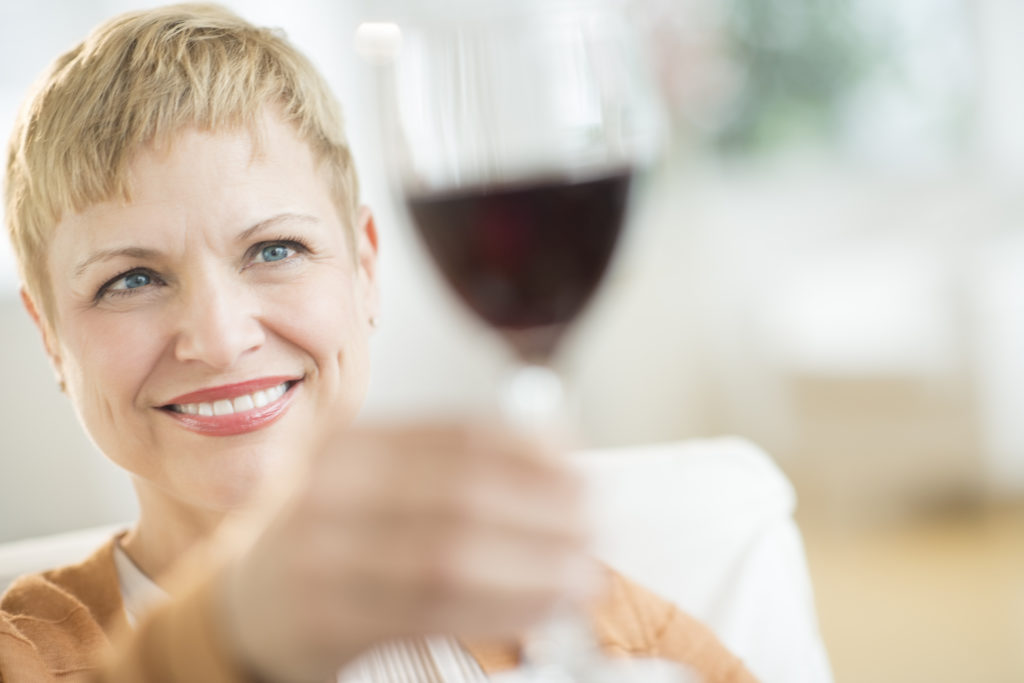The Binge Drinking Threat

My grandmother is over eighty and still doesn’t need glasses. Drinks right out of the bottle.
~Henny Youngman
Aging in Place
One early fall evening I was walking from the University to the YMCA where I had parked my car earlier in the day. A well-worn path connected the main road to the soccer/track field of Duniway Park; which was sloped and damp from a light mist in the air. Stepping onto the trail I noticed a lone figure walking erratically in front of me. It was an elderly woman dressed in a spring-like outfit of light pants and a cotton short sleeved shirt (somewhat out of place for the seasonal conditions).
Suddenly, she slipped on the downhill slope of the path and abruptly went down; and before I could reach her, she was upright and slightly dazed…her white pants now mud and grass stained. As I approached, she turned and sheepishly reported to be “OK.” It was obvious she had been drinking.
She was living in the Terwilliger Plaza overlooking the park and had decided to take a stroll when our paths crossed. Ironically, I was returning from a gerontology class and the topic of discussion for the night was aging and alcohol abuse.
Binge Drinking: It’s Not Just a College Problem
In the 1978 classic movie, Animal House, Bluto (John Belushi) tries to console his fellow frat mate, Flounder (Stephen Furst), by thrusting a six-pack into Flounder’s hands and saying: “My advice to you is to start drinking heavily.” To which Otter (Tim Matheson) says:” Better listen to him, Flounder, he’s in pre-med.”
Binge drinking is never sound advice (premed or not); and is notorious in college life–but less identified in the elderly population.
Data From Over 10 Years Ago Reflects Current Trends
Duke Univeristy researchers, Dan G. Blazer, M.D., Ph.D., and Li-Tzy Wu, Sc.D., analyzed data related to the drinking habits of middle-aged and elderly adults from the 2005 and 2006 National Survey on Drug Use and Health (survey of nearly 11,000 adults age 50 or older). They found that 22 percent of men (more than one in five) and 9 percent of women ages 50 to 64 engage in binge drinking. Among those over age 65, 14 percent of men and 3 percent of women reported binge drinking.
The study, which was published in the American Journal of Psychiatry, also discovered that many older Americans consumed enough alcohol on a daily basis to be classified as heavy drinkers by the American Geriatric Society (19 percent of men and 13 percent of women). These data suggest that binge drinking is occurring not just on campus, but in suburbs and assisted living facilities across the country.
“With this study we’ve learned that adults, especially those in their fifties, are carrying a heavier drinking burden into late life.”
– Dan G. Blazer, MD, PhD
Medical News Today, notes the researchers at Duke report these findings as “significant” and “worrisome,” especially since the level of drinking reported puts those 50 and older at a greater health risk than younger counterparts because their aging bodies metabolizing alcohol less quickly. Further, older adults may be on other medications (polypharmacy) that may become dangerous when combined with alcohol. This demographic can have more existing health problems, or comorbidities that alcohol consumption can exacerbate.
“We feel that our findings are important to the public health of middle-aged and elderly persons as they point to a potentially unrecognized problem that often ‘flies beneath’ the typical screen for alcohol problems in psychiatry practices,” Dr. Blazer said. “Clinicians who work with this age group would be well advised to ask specifically about binge drinking.”
The research also found respondents 50 and older that were binge drinkers were more likely to use tobacco or illicit drugs–than those not reporting alcohol use. And because binge drinking is not associated with psychological distress, it may be overlooked by health care providers.
Recent Data Suggests
“The evidence indicates that Americans are getting older and drinking more,” says NIAAA Director George F. Koob, Ph.D.
Currently, 26 percent of men and 30 percent of women in the United States are age 55 or older, compared with 21 percent of men and 24 percent of women 10 years ago. Experts estimate that by 2050, nearly 1 in 5 people in the United States will be age 65 or older, compared with 1 in 7 now. And alcohol researchers have reported significant increases in alcohol use and misuse among older individuals. For example, recent years have seen an increase in alcohol use among men and women age 60 or older and an increase in binge drinking among women age 60 or older.
~National Institute on Alcohol Abuse and Alcoholism
Other factors associated with binge drinking:
-Higher income
-For males: Not being married
-Nonmedical use of prescription drugs
-For females: Being employed
Heavy alcohol consumption and binge drinking account for nearly 21,000 deaths each year among those ages 65 and older, according to the website alcoholrehabguide.org.
Bottom Line
There are a multiple factors contributing to alcohol abuse numbers growing in the elderly. As a person ages they face major life changes such empty nesting, the social suicide of out living peers, losing partners/roles, financial difficulties, deteriorating health, loss of independence, isolation, or living with chronic illness. Anyone could trigger events leading to alcohol dependency. This is a growing health crisis given the sheer numbers of people living longer and our lack of social roles and supports for older adults concerning this issue.
In case you’re wondering what happened to the tipsy senior, I walked her back to the assisted living facility and never saw her again…
________________________________________________________________________________________
Google: FACTS ABOUT AGING AND ALCOHOL
